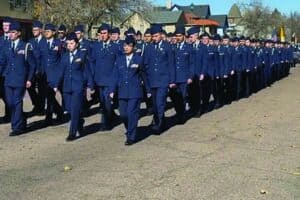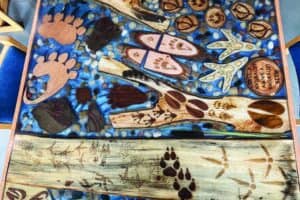In the last issue, I mentioned that I would attempt to explain more on how birds migrate. With spring migration hitting, I am going to be getting into some practical discussions, such as identification and the like.As a result, I will not be exhaustively studying the bird migration after this article, but I will be picking up the topics that we were discussing last summer. I hope, however, that you enjoyed the stories and facts about how these tiny bundles of feathers traverse the expansive distances they cover every year.The last sense that birds use for migration that I would like to talk about is hearing. Birds have a phenomenal sense of hearing. One of the most useful is their ability to hear infrasonic sound. Thus, birds that fly over the prairie and out of sight of any landmarks are able to hear infrasonic sound from the wind blowing on distant mountain ranges, and they are able to navigate by those landmarks without seeing them.Also, it is believed that Red Knots (a type of shorebird) flying over the Mississippi River are conceivably able to hear the surf crashing against the shores of both the Pacific and Atlantic oceans. Birds also use both hearing and vocalizing to stay in contact with others in their flock, reducing the chance of a single bird becoming confused and getting off track.OK, welcome to new birdersI would like to extend a welcome this month to anyone who has joined the growing ranks of birders this past year. For those who are interested and want to know how to get started, here is a quick overview of what will be needed to start: binoculars, comfortable clothes, a field guide and a hat. I include comfortable clothes because birding in a pair of jeans that rub and chafe can ruin an otherwise great morning of birding. We will discuss the rest of the items separately.
- Binoculars: Please do not start with a cheap pair, as that could quickly lead to frustration and turn your birding into a desperate fight with your binoculars. This is not conducive to a healthy enjoyment of the sport. You may not want to jump in with a $1,600 pair, but don’t start with a $10 pair like I did. Try finding something in the $100 and up range, as that will give you the optic quality to enjoy them, and you can then upgrade if you find you’re really serious.
- Hat: Find a comfortable hat that will shade your eyes and face, but won’t get in the way of your binocular use. I use a baseball cap, but many birders like the full-brimmed Tilley hats.
- A field guide: I would recommend the “Sibley Guide to Birds.” This comes in three versions: a complete guide to all of North America and two smaller guides that break the continent into east and west regions. The complete guide is pretty large, and it can be somewhat burdensome in the field. The small guides, however, are a great manageable size. For Colorado birding, get the western guide.






